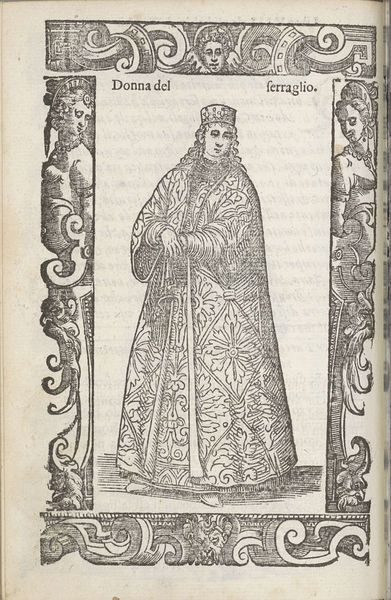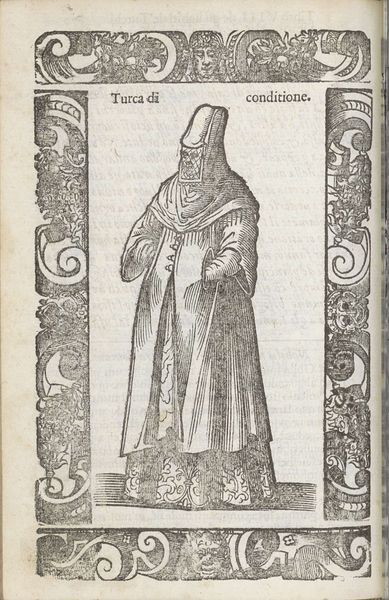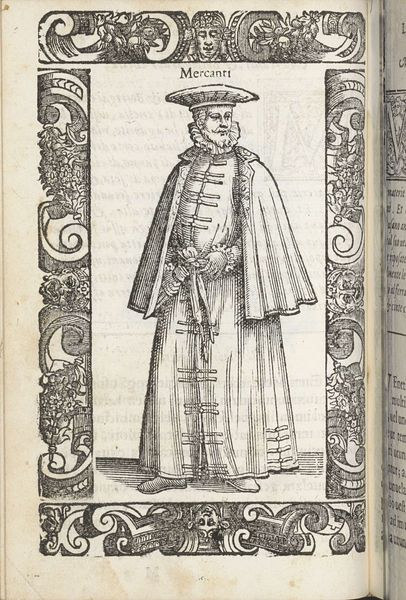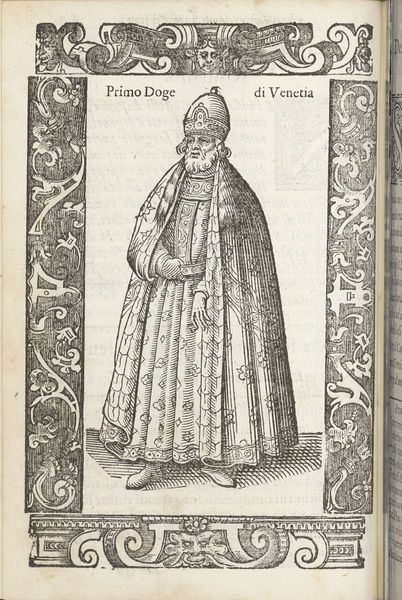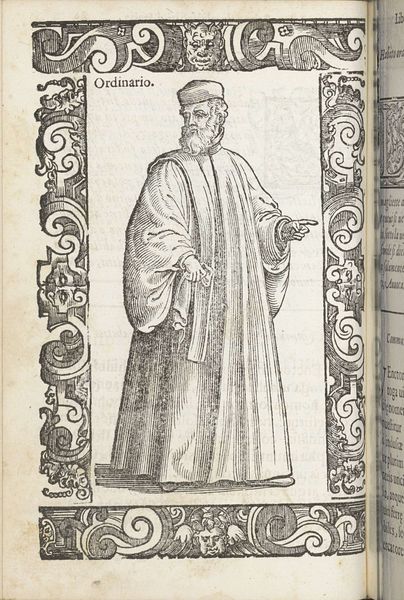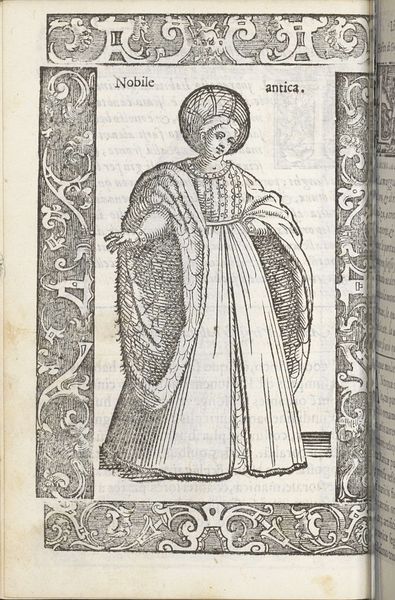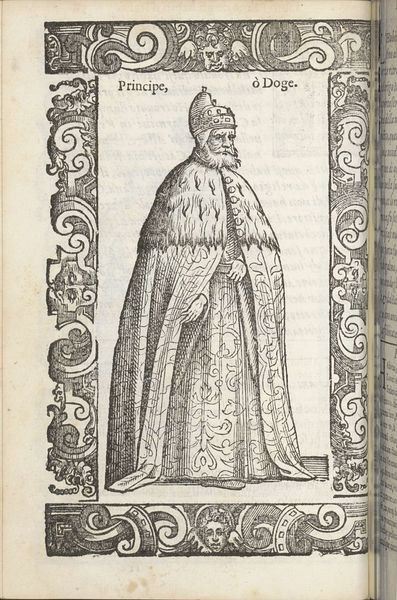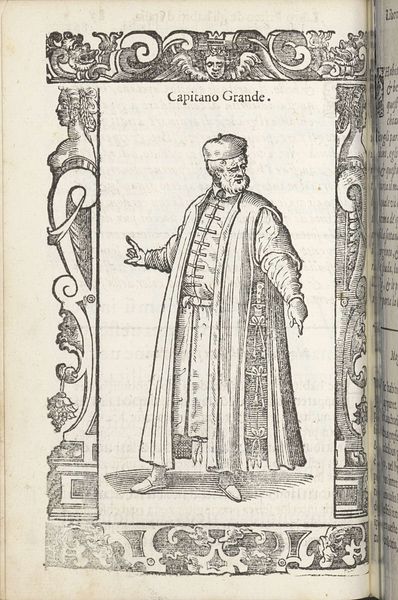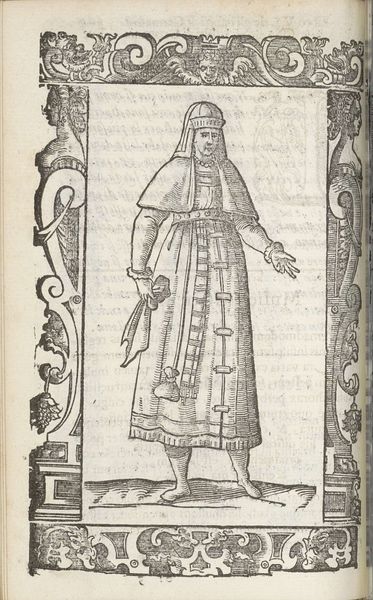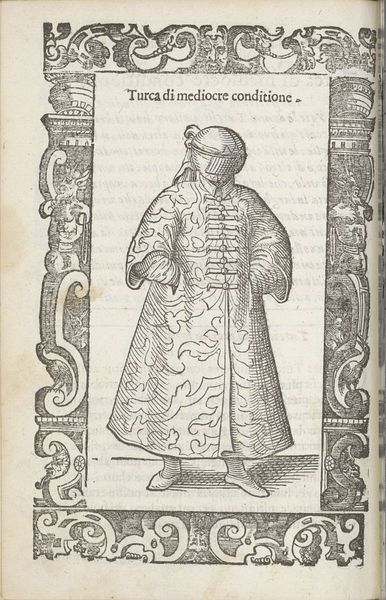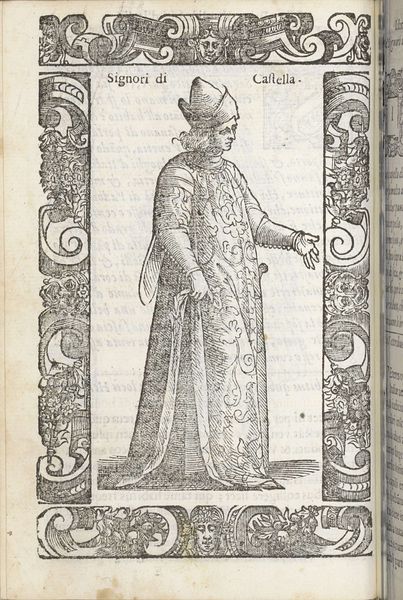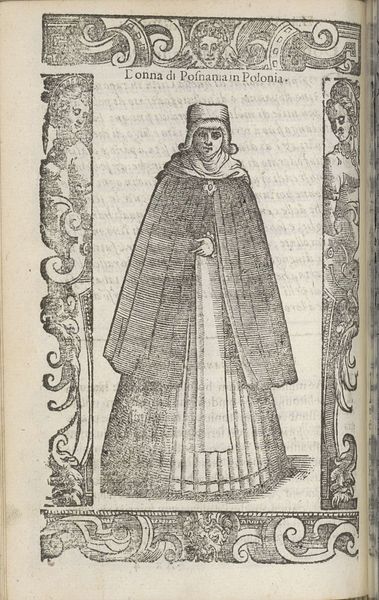
drawing, print, ink, engraving
#
portrait
#
drawing
#
pen drawing
# print
#
11_renaissance
#
ink
#
genre-painting
#
engraving
Dimensions: height 167 mm, width 125 mm
Copyright: Rijks Museum: Open Domain
Curator: Well, hello there, Lituana di Crodne. This is a piece by Christoph Krieger, created in 1598 using ink. The medium is described as an engraving. The overall style... a pen drawing. Editor: It feels almost theatrical, doesn't it? Like a figure stepping onto a stage. The ornate border clashes beautifully with the relative simplicity of the central figure, this individual in what looks to be an elaborate garment. There’s a directness to their pose—open palms, an almost vulnerable expression. Curator: Vulnerable and yet confident, don't you think? This isn't just a portrait; it captures a cultural type. The detail in the clothing is captivating—each fastening on the robe, the texture of the fur collar, speaks of meticulous craftsmanship, of the very labour of making a statement through clothing. Editor: Absolutely, I was thinking about that construction as well. Considering it's an engraving, you can sense the process and effort. Each line meticulously etched, each area of shading carefully considered, it’s amazing how the clothing almost transcends simple depiction to represent wealth and status...maybe power? Curator: And beyond individual power, it might say something about trade. Textiles were moving about Europe in a fascinating way. When I consider how materials circulated in Krieger's time, the availability of different inks, or paper qualities –it offers some insight into the movement of commodities across Europe at the time. The choice of paper or ink wouldn’t just have been practical. Editor: Right. Availability shaped how this artist, Krieger, could interpret their sitter and share his world with a larger audience by circulating it as print. The decision to immortalize Lituana this way—what kind of audience would be drawn to it, what stories it might tell as it moves around Europe. Curator: Indeed. What sort of conversation this would spark over centuries. Well, it has certainly made for an interesting conversation between us. Editor: Certainly, an exploration across history, culture, materiality. It's really about how labor and materials translate the subject. Fascinating piece.
Comments
No comments
Be the first to comment and join the conversation on the ultimate creative platform.
